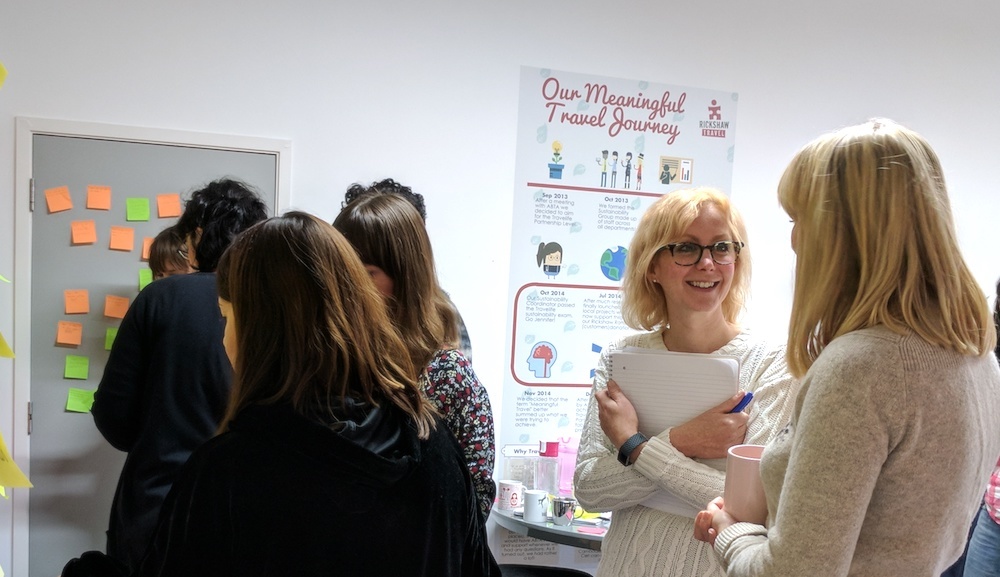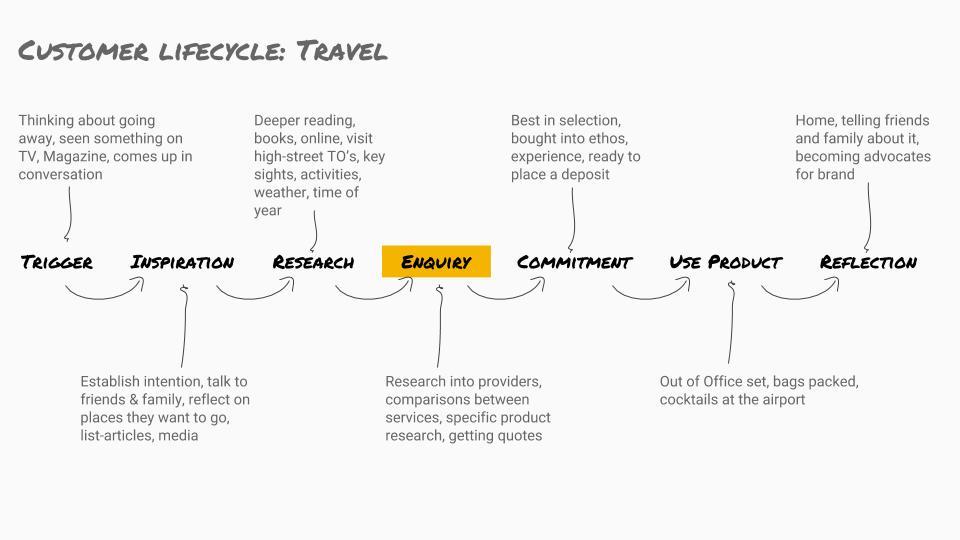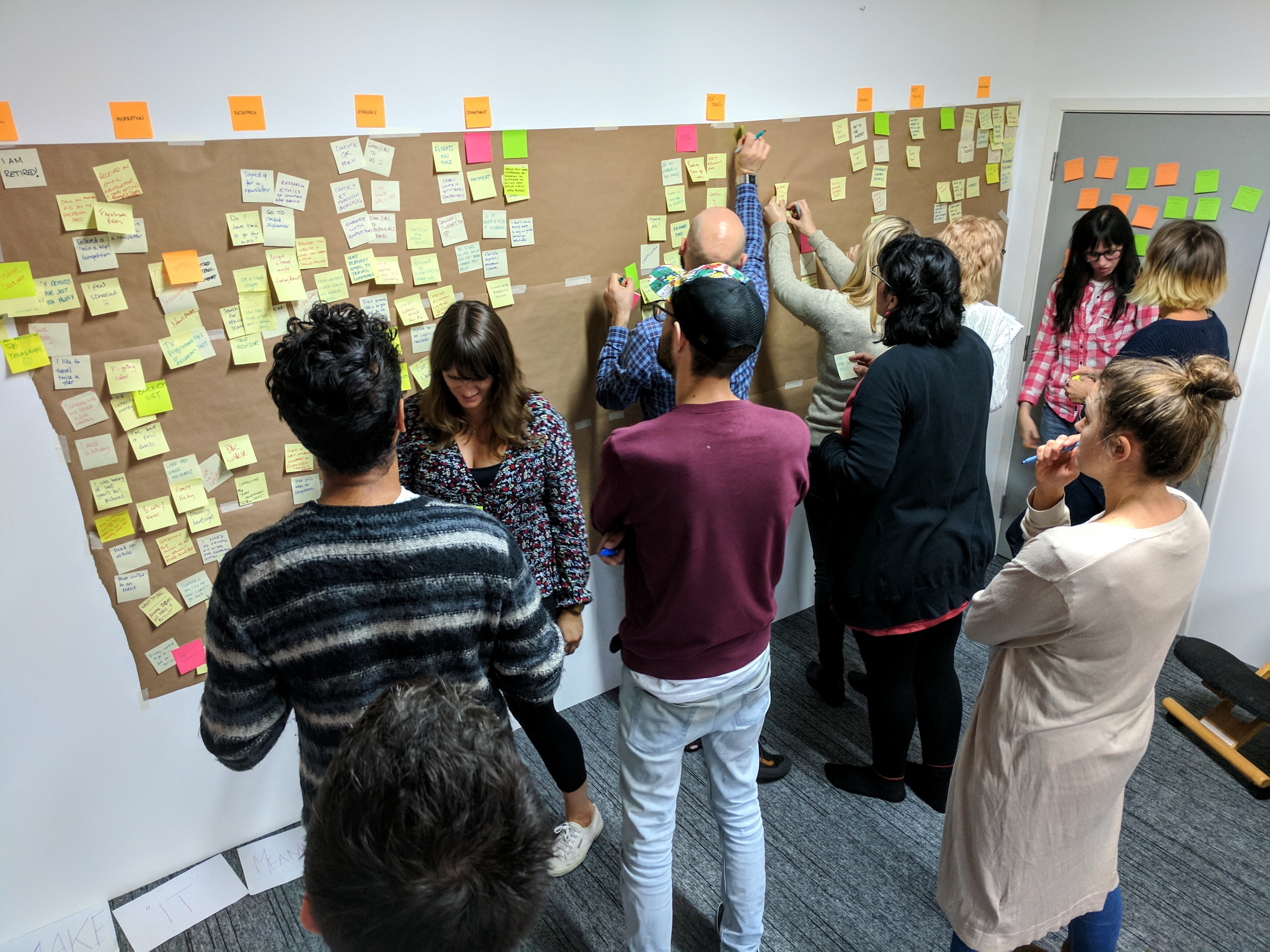Mapping the customer experience for adventurous travellers, Rickhaw Travel
Role and Responsibilities: User Experience Designer
How do you know what to invest in next?
The marketing team had a backlog of fantastic digital developments for their customers but were finding it difficult to know what ideas to put their efforts into.
With several major digital transformation projects happening across the company, they wanted to learn how to create and utilise user research to guide decision making, and highlight opportunities for the company.
Comparing business opinions with customers
After running a kickoff session with stakeholders across the company we identified a need to do some rapid research to see how aligned the staff views on customers, and the sales process was.
We setup 1-2-1 interviews with the travel specialists who spend all day talking to customers, and arranging holidays to unique places off the beaten-path in destinations such as Cuba, Thailand, Costa Rica, India and all throughout Asia and South America.
The insights from these sessions created the basis for customer interviews, where we spoke with a variety of customers who had booked, or travelled within the last year. We spoke to them about their travel history, what excites them about going to new places, how they make decisions on where to go, why they chose Rickshaw Travel and their experience with the company.


Assumptive experience mapping
Our insights from customer interviews gave us a solid customer journey that started long before even hearing about Rickshaw Travel and ending long after their plane returned to UK soil.
The next step was to coach the marketing, product and travel specialists teams through creating an experience map through a facilitated workshop with the rest of the company.
The great advantage to such a unique business is that its size meant it was possible to get everyone involved at some point throughout the day-long exercise.

From assumption to fact
The outcomes were exciting, with the departments showing their depth of knowledge in their area and exposing gaps in understanding about other teams specialist areas and more importantly how these handoff points can often lead to customer frustrations.
Over 2 months, we held coached follow up sessions where the team were able to turn their assumptive map data into facts based on insights gathered through various customer data-sets and knowledge experts.
Data was analysed from platform partners such as Trust Pilot, Storystream and Google Analytics along with LiveChat logs, email queries and call logs all building up evidence for our understand of customer motivations, pain points and moments of delight.
Refining processes
A number of key changes in business process came out of the exercise as well as opportunities for new marketing strategies and improved services.
Prioritisation for customer leads was changed after learning about key behaviour trends in how people made enquiries about the company and communicated their travelling desires.
Prioritising feature developments
The advantage of having a visualisation of the customer experience is that it makes it easy to detect where you need to put your efforts. The map gave all the teams at Rickshaw Travel a clear direction on where things could improve and were able to make changes to how key service areas worked immediately.
Creating a focus for the future
The map is now a permanent fixture in the Rickshaw Travel open plan office, and used as a focal point for any session relating to service design or product design across all teams.